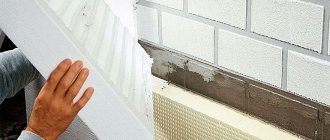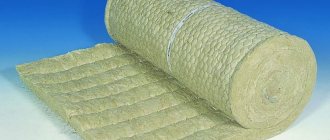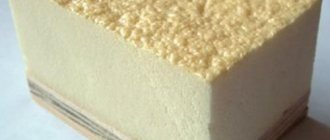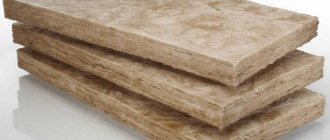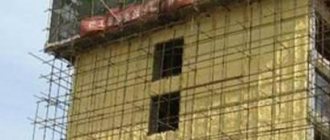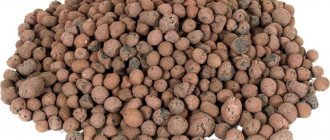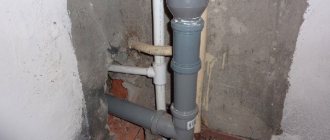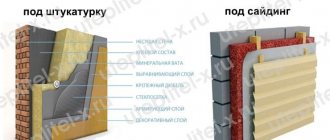About chemical resistance, GOST and fire safety
GOST regulates the composition of the material described in this article, as well as its specific properties. In addition, GOST also standardizes the sizes of mineral wool slabs:
- the thickness should be within 4-15 centimeters;
- width - either 50, 60, or 100 centimeters;
- and finally, the length is 100 or 200 centimeters.
In terms of fire safety, mineral wool can be of two classes:
- G1;
- G2.
These classes determine the possibility of using the material on objects that pose a hazard from the point of view of ignition. Due to its properties, it prevents the destruction of supporting structures, as well as the object as a whole. For many decades, deformations in no way affect the shape of the insulation. Minvata absorbs vibrations generated by the walls, providing a quiet and cozy home.
Note! The durability of mineral wool is achieved due to its resistance to chemicals. The influence of chemically active substances and solvents does not in any way affect the integrity of the structure. For this reason, mineral wool is actively used in construction and industry - with its help, engineering communications, tanks, and various equipment are isolated.
When insulating residential buildings with the help of mineral wool, new technologies are created for creating frame-type objects. This insulation can significantly reduce construction costs, while heating costs will not increase. Minvata can insulate floors on logs, ceilings, verandas, walls, the only condition is that after installation, the material must be ventilated.
Video - Wall insulation with mineral wool
Material specifications
Due to the properties of the raw material, the mineral wool does not burn even in direct contact with fire. Most of the fibers in it are silicates, therefore, the technical parameters of the material are quite high due to the production technology. Below are the most significant properties that must be taken into account when thermal insulation of facades and production of sandwich panels:
- vapor permeability ranges from 0.5-0.53 mchPa;
- thermal conductivity is equal to 40-53 watts per meter per K .;
- the moisture absorption rate for the entire volume of the material is 1.5 percent;
- limiting density - 200 kilograms per cubic meter;
- compressive strength - about 0.6 megapascals;
- and finally, the moisture-to-weight ratio is about 3-5 percent.
Note! There are also special slabs of this material used exclusively for roof insulation - we are talking about hydrophobized thermal insulator slabs.
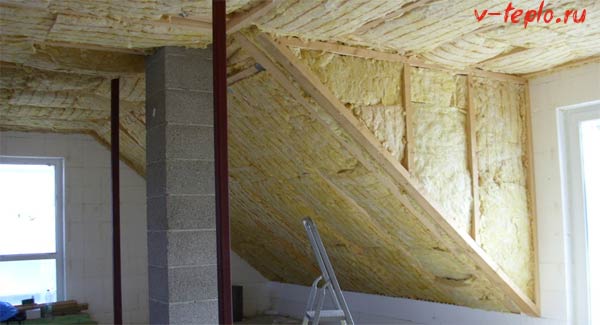
In addition, there is a rolled mineral wool, and also in the form of mats. The specific parameters depend on the silicate components (if up to 99 percent) and the organic binder:
- magnesium, calcium oxide - from 20 to 35 percent;
- silica - from 35 to 45 percent;
- potassium, sodium oxide - from 1 to 8 percent;
- alumina - from 14 to 25 percent.
Note! The indicators presented above are determined in relation to the weight of the mineral wool.
To reduce the level of moisture, a special water-repellent impregnation is used. Thanks to it, such technical characteristics of mineral wool as moisture resistance and a high rate of vapor permeability appear (thanks to the latter, the material can "breathe"). And moisture, overcoming all layers of insulation, simply does not linger in it.Thanks to all this, the thermal insulation properties of mineral wool are increased, but in order for them to be preserved, it is necessary to provide for their ventilation when insulating the facades.
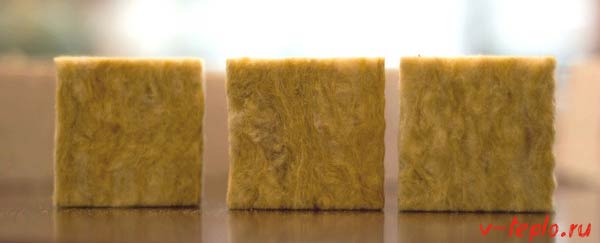

Mineral wool from basalt fiber gost 4640-93
- home
- →
- Company
- →
- news


12/02/2013 Mineral wool basalt in accordance with GOST 4640-93, is a layer of entangled staple fibers (basalt fiber), which are obtained by melting rocks, bonded together by natural adhesion forces. It is a raw material for the manufacture of stitched mineral wool mats (in accordance with GOST 21880-93), as well as slabs, shells, sandwich panels, etc. in a bundle in general, therefore, mineral wool can be used as an independent type of thermal insulation. Basalt fiber mineral wool is used:
- thermal insulation of buildings and structures;
- widespread use in civil engineering;
- shipbuilding, aircraft construction, rocketry;
- metallurgy;
- production of pierced mats;
- and much more.
Basalt mineral wool is a new, technically progressive type of heat-insulating material. This type of product has high technical characteristics such as:
- thermal conductivity - 0.038 - 0.041 W / (m * K);
- application temperature up to 700 ° C, permissible for a short time up to 900 ° C;
- lack of organic matter.
The high characteristics of basalt wool make it an almost indispensable material in such critical industries as the production of military submarines, ships, spacecraft. Nowadays, enterprises of the Russian Federation have successfully mastered the production of mineral wool based on basalt, and to all the advantages of this thermal insulation, one more has been added - the low cost of production, which makes it possible to use this material in all areas of the domestic industry where the problem of energy conservation is acute. BASALT THREADED MATS TU 5769-001-73902414-2005 Basalt pierced heat and sound insulation mats, MPB, are a product made of basalt mineral wool (GOST 4640-93). Mats are made from fibrous materials, stitched with thread, in various coverings. Depending on the covering material, the mats have an operating temperature of –120 ° C to 700 ° C. Basalt pierced mats are used as heat-insulating and sound-absorbing material for equipment, apparatus and pipelines at temperatures of insulated surfaces up to 700 ° C. Basalt heat-insulating mats are used:
- civil and industrial construction;
- CHP, TPP, NPP;
- oil refining industry;
- gas and oil transportation;
- shipbuilding, aircraft construction, rocketry;
- metallurgical industry;
- light industry.
Advantages of basalt fiber heat and sound insulation materials:
- environmentally friendly product, has a natural stone formula - basalt;
- free of organic binder, carcinogenic and toxic substances (most modern thermal insulation materials contain phenol-formaldehyde resins, June 15, 2004 IARC (International Agency for Research on Cancer) - classified formaldehyde as a substance that causes cancer in humans);
- stitched mats do not collapse when the temperature rises and when the temperature is cycled, retain their characteristics and geometric shapes;
- high heat resistance, incombustibility, continuous use temperature from –180 ° C to +700 ° C, depending on the covering material;
- high chemical resistance to alkaline and acidic environments;
- the highest sound absorption coefficient, one of the insulation materials used in missiles and submarines;
- pierced basalt mats are not afraid of vibrations, unlike traditional products made of mineral wool and fiberglass, which are destroyed by vibration;
- the service life is 5 times higher than that of traditional analogues of slag and glass wool.
The products of SK Tikam LLC are fully certified. The epidemiological conclusion confirms its environmental safety. The fire safety certificate confirms its absolute incombustibility and high resistance to high temperatures. Number of impressions: 3981 Source: https://www.tikam.ru/lang/ru/work/isolation
Back to the list
Material marks and marking
As noted above, mineral wool is produced in rolls, plates and mats. It is ideal for insulating roofs, attics, ceilings and walls of buildings. Usually there are no difficulties during installation / operation. Typically, stone wool can have different densities, on the basis of which several grades of material are distinguished. Let's get acquainted with each of them.
P-75
As the name suggests, the density in this case is 75 kg / m3. The material is perfect for insulating horizontal surfaces that are not subject to significant loads - attic, some types of roof. Also, gas and heat pipelines are wrapped with such cotton wool. If the material has a lower density, then it can be used only where there are no loads in principle.
P-125
Insulation with a density of 125 kg / m3, which has good sound insulation properties. Great for ceiling, floor and interior wall insulation; can also be used for internal thermal insulation of brick houses, as well as buildings made of aerated concrete or foam blocks. In a word, the mineral wool of this brand is capable not only of insulating, but also of soundproofing a room, and of a very high quality.
ППЖ-200 and ПЖ-150
The density of these materials is traditionally clear already from their name. The technical characteristics of the mineral wool of this sample are as follows: density, as well as increased rigidity (that's why such an abbreviation). They are used for insulating metal or reinforced concrete walls, ceilings, etc. By the way, the "two-hundredth" PPZh can also be used to protect a building from the spread of fires.
Types of hard mineral slabs - find yours among them
On the Russian market of heat-insulating materials, a rigid mineral wool plate of the following types is presented:
- soft
, with a density of up to 75 kg / m³ (minelite P-75), intended for use as an unloaded insulation; - semi-rigid
, with a density of up to 125 kg / m³ (minelite P-125), are used in pitched roofs, in three-layer walls with effective brickwork and in the manufacture of sandwich panels with sheathing of steel profiled sheet; - tough
, with a density of up to 175 kg / m³ (P-175), suitable for use as a lower layer of insulation when installing flat roofs, in frame structures of walls, pitched roofs, ceilings and floors; - increased rigidity
up to 200 kg / m³ (mineral slabs ППЖ-200), which can serve as a base for a floor screed, as an upper insulation layer for flat roofs with or without a screed, for thermal insulation of structures buried in the ground.
Depending on the manufacturer and brand, basalt slabs can have a length of 1.0 and 1.2 m, a width of 0.5; 0.6 or 1.0 m and thickness from 40 to 100 mm. This allows them to be used for insulating a wide variety of surfaces. Minplita, the price per m3 is presented in our price list.


Mineral wool classification
The term "mineral wool" includes the following materials:
- glass wool (as the name suggests, it is made of glass);
- slag (it is made from metallurgical waste - slag);
- stone wool (it is also called basalt; it is a heater made from rocks).


In order not to get confused in this classification, we will consider the features of each type, its strengths and weaknesses.
# 1. Glass wool
Mineral insulation with a fibrous structure. For its manufacture, the same raw materials are used as in the production of ordinary glass (as an option, glass production waste can be used). Due to its special composition, the material is resistant to chemical attack. Its density is often in the order of 130 kilograms per cubic meter.
Penofol technical characteristics
We advise you to familiarize yourself with our review of the technical characteristics and features of such material as penofol, see details here
Specifications
Glass wool differs in its properties from other types of material. The thickness of the fiber in it can reach 15 microns, while the length is about five times greater than that of the stone one (we will get acquainted with it a little later). That is why glass wool is so resilient and durable. Tellingly, there are practically no non-fibrous inclusions in it.
Main varieties
Insulation is produced in the form of soft, as well as semi-rigid and rigid (synthetics acts as a binding element) plates. The latter are able to withstand rather heavy loads. So, hard mats covered with glass fiber can be used for wind protection; with proper installation, there are no gaps between them. Soft fiberglass is pressed into rolls, which, as already noted, are distinguished by their elasticity.
There is also a kind of material covered with an additional layer - lamination. Both fiberglass and foil act as such a layer.
disadvantages
The main disadvantage of the material is the fragility of the fibers. Pieces of these fibers are able to penetrate clothes, other objects, and it is almost impossible to get them out of there. When in contact with the skin, fibers can cause irritation, and when they get into the lungs, they provoke a rather strong reaction, because they leave there in small "portions".
It is extremely dangerous if fiberglass gets in your eyes. Therefore, work with the material should be carried out in special goggles, heavy gloves, respirators, as well as in clothing that does not leave unprotected areas of the body.
Glass wool is also characterized by excellent vibration resistance. Its thermal conductivity can reach 0.52 watts per meter per K., it is also able to withstand temperatures up to 450 degrees.
Manufacturing
In the production of glass wool, sand, borax, limestone, dolomite and soda are used. We also note that today mainly cullet is used, and not whole glass, or, more simply, ordinary waste. All components are fed into the hopper, after which they begin to melt. With the help of dispensers, all the components are sent to the melting furnaces, while the temperature should be about 1,400 degrees, otherwise the required technical characteristics of the mineral wool will not be achieved. From the formed mass, thin threads are made by blowing glass fed from a centrifuge.
Insulation of the attic floor
We recommend that you familiarize yourself with our guide to insulating an attic floor. What materials are better for doing this, for tips and installation features, see here
In parallel with all this, the material is covered with a polymer aerosol. The binding element in this case is a solution of an improved urea polymer. After being sprayed with an aerosol, the yarns are fed onto rollers and straightened on a conveyor. The result is a homogeneous material that looks like a carpet. Then it is polymerized at a temperature of 250 degrees (this is very important!), Which is a catalyst for this kind of compounds. At the same time, the remaining moisture evaporates, and the material, which has passed the polymerization, becomes hard and durable, acquires a characteristic yellow color.
Note! Next, the glass wool is cooled, after which the cutting process begins. The continuous belt coming from the conveyor is cut into pieces by means of cutters.
The volume of the finished heat insulator is quite large, because there is a lot of air in it. Therefore, for transportation and storage, the material is pressed, reducing the volume by about 6 times. And due to the fact that glass wool also has elasticity, after unpacking it quickly takes on its original shape.
Video - Glass wool production
Stone wool
The technical characteristics of this type of mineral wool are practically the same as for slag wool. But the advantage of the material is that it does not prick. It is safe and convenient to work with it, which cannot be said, for example, about glass wool. Perhaps the most popular mineral wool option today.
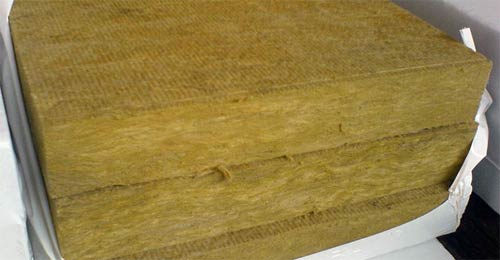

The thermal conductivity of this material can reach 0.12 watts per meter per K., the indicator of hygroscopicity is average, the maximum operating temperature is about 600 degrees.
Video - Basalt wool
No. 3. Slag
This heat insulator is made from blast furnace slag - in principle, metallurgical waste. Slagovata was patented back in the fifties of the last century in the Soviet Union; it began to be widely produced at metallurgical enterprises. This production required insignificant investments, and the waste is recycled. At the same time, both enterprises and the construction industry were provided with very high-quality thermal insulation materials.


Characteristically, slag wool is distinguished not only by its low cost, but also by its low thermal conductivity, which is why it is the best option for insulation. But it is worth noting that the entire effectiveness of this material can almost completely disappear due to the increased hygroscopicity.
Another disadvantage of the material is poor vibration resistance, as well as an increased indicator of residual acidity. Upon contact with atmospheric precipitation, acids appear in the fibers of the material, leading to rusting of metal surfaces. Actually, this is the main reason that slag wool was ousted from the market of heaters by more modern heat insulators.
The use of various heaters
The SNiP documentation describes in detail how and how to properly insulate structures for various purposes. Insulation of the facade, according to the norms, can be carried out using various heat-insulating materials, and each of them must correspond to certain parameters.
Styrofoam
Styrofoam
In order for insulation using foam plastic to comply with SNiP standards, one should be very careful about the choice of material, since not all plates meet the requirements. The documents prescribe foam plates that have:
- density not less than 100 kg / m³;
- specific heat capacity from 1.26 kJ / (kg ° С);
- thermal conductivity is not more than 0.052.
They also limit the possibility of using foam for insulating its flammability, which should be taken into account if increased fire safety requirements are imposed on the building.
Expanded polypropylene
Expanded polypropylene
For such a facade insulation as expanded polypropylene, the SNiP does not spell out exact requirements, since it is a fairly new thermal insulation material. As practice shows, this material is most often used to provide waterproofing.
Low coefficient of thermal conductivity allows it to be used for insulation. But for application, specialized equipment will be required, which significantly complicates the process of applying polypropylene foam to the surface.
Mineral wool of different classes
Minvata
Using mineral wool is the easiest way to achieve compliance with SNiP standards. Soft facades are not used, while the regulatory documentation allows for insulation with semi-rigid and rigid plates.
The second option is recommended for use when working with a plastered surface. Semi-rigid mineral wool is the best choice for brick walls and aerated concrete.
Expanded polystyrene, polyurethane foam - extruded materials
Expanded polystyrene
Insulation with any materials from this category is allowed only for basements and attics. This is due to the special quality characteristics of heaters.
In addition, the work is fraught with a number of difficulties, in particular the application of foam materials, and requires adherence to safety measures and the use of personal protective equipment.
Foam concrete, aerated concrete
Aerated concrete
According to building codes, the rules established by SNiP, the use of such heaters is relevant for the thermal insulation of industrial facilities.
In residential and public construction, such materials are usually used only when filling wells in the masonry of lightweight walls.
Features of the choice of material
Among the numerous producers of mineral wool, the following brands are the most popular: Technonikol, Ursa, Rockwool, Knauf and Isover. The cost of the material depends directly on its density, because the higher this parameter, the more raw materials are required for production. Although the average cost ranges from 100-180 rubles per square meter.
Before buying, you must carefully examine the packaging in order to find out whether the requirements of GOST were taken into account in the manufacture. Also check the specifications, ask the seller to open one package.
Find out where the fibers are directed in the material. If those are vertical, then the mineral wool will perfectly retain thermal energy, if in a chaotic manner, then the insulation is very durable and, accordingly, capable of withstanding heavy loads. Glass wool and slag wool are cheaper, but you should think twice before purchasing them. Despite the fact that the thermal insulation of these materials is increased, quite difficulties arise during their installation. So, glass wool, if it gets on the skin or eyes, can lead to serious irritation.
Mineral wool brands P-100, P-150, PPZh-200
Today, manufacturers produce mineral wool in the form of rolls, plates and mats. This material successfully insulates the roof, ceilings and attic floors of the house. Difficulties in using and laying the material will not arise, even for an inexperienced person. Depending on the purpose of the material, the density of basalt wool can be different, several brands are distinguished in accordance with its density.


Table. Technical characteristics of mineral wool (thermal conductivity, flammability,)
Mineral wool P-75
The density of the mineral wool is 75 kilograms per cubic meter. meter. The characteristics of P-75 mineral wool are only suitable for laying on horizontal surfaces that are not subject to loads. For example, ground floor floors, attics and flat roof views. The grade of basalt mineral wool P-75 is used for thermal insulation of pipes of heating plants, gas and oil pipes. Cotton wool of lower density is used where there are no loads.
Mineral wool P-125
The density of the mineral wool is 125 kilograms per cubic meter. meter. The characteristics of P-125 mineral wool have good performance in sound insulation, the material is suitable for laying on the floor and ceiling, thermal insulation of internal partitions. It is also used as thermal insulation inside walls made of foam concrete or aerated concrete. Using mineral wool P-125, you can insulate the facade with high quality and get excellent sound insulation.
Mineral wool ПЖ-175, ППЖ-200
The density of the mineral wool is 175 and 200 kilograms per cubic meter. meter respectively. This insulation is dense and has increased rigidity, which is reflected in the abbreviation RV and RV. Cotton wool is used for thermal insulation of interfloor floors and reinforced concrete walls. Due to the refractory characteristics of mineral wool PPZh-200 and PZh-175, it can be used as protection of residential premises from fire.
Tips for choosing mineral wool for home insulation
Worldwide, "ISOVER", "KNAUF", "ISOROK", "ROCKWOOL", "TECHNONICOL" produce excellent quality mineral wool. The cost of the material depends on its density, because the higher this indicator, the more the starting material is required for production. Mineral wool slabs are produced in Russia in accordance with GOST 9573-96, PPZh slabs (increased rigidity) in accordance with GOST 22950-95, and stitched mats in accordance with GOST 21880-94.
Arriving at a hardware store, carefully study all the characteristics of mineral wool. If the fibers are arranged vertically in the plates, then the material conserves heat better, if the fibers are randomly arranged, then the material will be more durable. Slag wool and glass wool have low prices, but if the fibers of the glass wool get on the skin, the affected area will be irritated and may itch for a long time, causing inconvenience.
